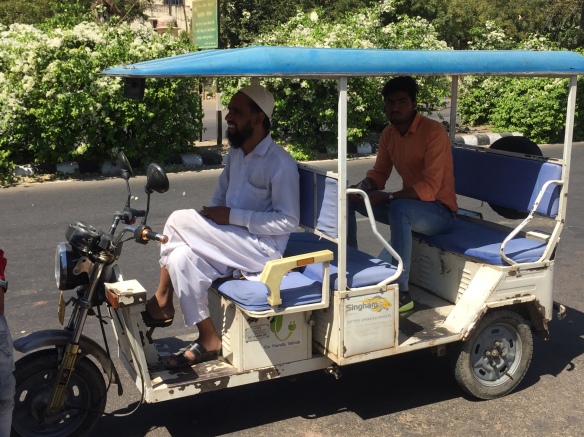Jaipur, affectionaly referred to as the Pink City because of the pink walls and buildings of the old city, lures visitors with its stunning remnants of a bygone era. The most popular Jaipur attractions and places to visit are the ancient palaces and forts, with their elaborate architecture that serves as a resplendent reminder of their royal heritage .
We drove to Amber by jeep, since the travel agency is against tourists riding on elephants (and rightfully so) . Amber is truly a fort like one out of a fairy tale. It is set on a hill top overlooking Maota Lake. It was the original home of Rajput royalty until Jaipur city was constructed. It contains a number of breathtaking palaces, halls, gardens, and temples. Inside, the elaborate mirror work and the glass coming from Belgium (!!!) adds to the grandeur. Just imagine the royals living in such a beautiful place – a lot of history happened here.
After such beauty, we had another adventure waiting for us… In the middle of crazy rush hour, our bus broke down 😱😰
 But, our very creative tourguide Jai, immediately resolved this minor issue in his very professional way. He stopped some tuk-tuks and they took us to a professional jewelry factory. Nice to see some exquisite gems, but I was happy just looking – feeling totally zen in the sparkling light of these diamonds…
But, our very creative tourguide Jai, immediately resolved this minor issue in his very professional way. He stopped some tuk-tuks and they took us to a professional jewelry factory. Nice to see some exquisite gems, but I was happy just looking – feeling totally zen in the sparkling light of these diamonds…
We were lucky enough to visit the City Palace, where the Maharadja still lives in his private quarters and where Princess Diana and Jackie Kennedy have been wined and dined. Here you can imagine the true love story between the beautiful Princess, Gayatri Devi and the handsome Polo playing Maharadja, Jai Sing. There were tales of Rolls Royces won and lost at the gambling tables of Monte Carlo, of millions of pounds spent to maintain dozens of residences and hundreds of servants, of promiscuity and reckless, gilded bohemianism. This was a time when modernity, independence and internationalism were swiftly replacing tradition, colonialism and provincialism. I’m now reading the memoires of Gayatri Devi – what a fascinating woman! (http://www.goodtimes.com.pk/memorable-romance-maharaja-sawai-man-singh-ii-mahrani-gayatri-devi-of-jaipur/ )






























































































































































































































































